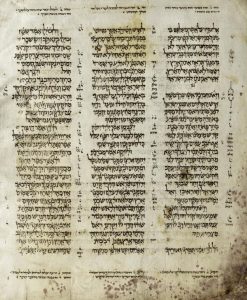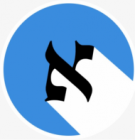The ‘Piyyut’ {פיוט} (from the Greek word ‘poiétḗs’ which means ‘poet’), the Jewish liturgical poem which was recited/sung in synagogues, was one of the creative spiritual ways in which Jews expressed their deep connection to God. The nature of this unique spiritual poetry generated changes in some of the grammatical structures of Hebrew and created – in some rare cases – a new morphology of Hebrew nouns.
The ‘Piyyut’ was the main liturgical text at the service in the synagogue until it was replaced several centuries later by the ‘Siddur’ {סידור} (from the word for ‘order’ in Hebrew) which is the ‘official’ Jewish prayer book.
After the congregation recited/sang the beautiful ‘Piyyutim’ {פיוטים} (the plural form of ‘Piyyut’) came the time for the weekly sermon at the synagogue. The Hebrew word for ‘sermon’ is ‘Derashah’ }דרשה} and from this word a new term was derived – ‘Midrash’. {מדרש}
The ‘Midrash’ is the written form of the sermon at the synagogue which was processed and edited into a short text that at its center lies a story with a moral lesson. Due to its figurative nature, the ‘Midrash’ literature gave raise to many Hebrew idioms and phrases that enriched the Hebrew language.

Between the 8th and the 10th centuries, the entire structure of Hebrew orthography went through a reform and was reorganized by the Jewish scribe-scholars (the ‘Masoretes,’ which comes from the Hebrew word for ‘tradition’ – ‘Masoret’{מסורת}) who lived in the city of Tiberius, located on the shores of the Sea of Galilee in the northern part of Israel.
Their most significant enterprise was probably the development of the ‘Niqqud’ {ניקוד} system (‘Nequdah’ {נקודה} means a ‘dot’ or a ‘point’ in Hebrew). It is called that because of the dots which are used together with the Hebrew letters in written texts which is also known as the ‘vocalization’ or ‘vowelization’ of Hebrew.
Their most valuable work, by any standards, is the ‘Aleppo Codex’ (‘Keter Aram Tzova’ {כתר ארם צובא} in Hebrew) which is a one-of-a-kind manuscript of the Hebrew Bible from the 10th century! The Aleppo Codex is housed today in the Israel Museum in Jerusalem.
